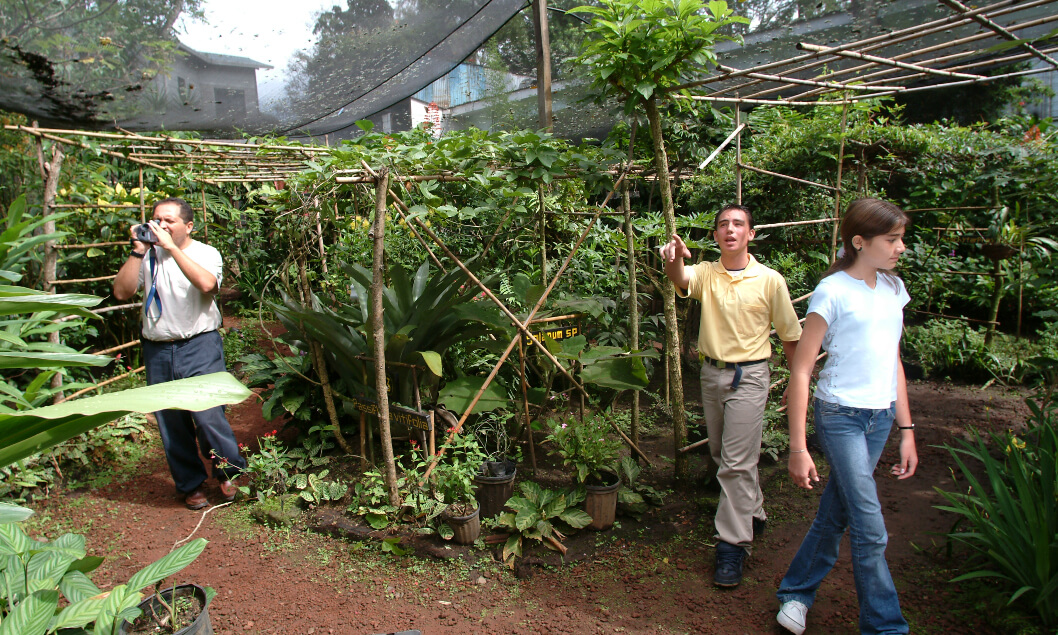Meet a bizarrely adorable creature that lives in the deep sea all over the world.


Meet a bizarrely adorable creature that lives in the deep sea all over the world.

China are in the process of building a futuristic “Forest City” aimed at helping to improve the problem of air pollution and climate change. It is a great initiative and one that could be replicated in other countries in the future.

What springs to mind when you think of interactive learning? Computers, apps, online tests? Think again! Last year 60 high school students in California teamed up with local volunteers from their community to create an outdoor space in which to learn, explore and enjoy.

Have you ever found yourself struggling to write your English paper because you’re distracted by your smart phone or TV? Maybe a trip back to nature will help clear your head. Read this article to find out how getting away can help you regain your focus.

“I have a memory like a goldfish.” This reputation for our finned friends does not hold true apparently! Studies have disproved this idea that fish have poor memories and that they are better at navigating space than us.

Across many nations, including America, Earth Day is celebrated on April 22. This is a day for people worldwide to focus on the great environment in which we live and breathe, and raise awareness about environmental problems.

March 21 was marked as the International Day of Forests in 2012, a day for local communities and organizations to raise awareness and celebrate the importance of forests. The theme for this year is Forests and Energy. Here’s a reminder (or 21 reminders . . .) of why forests are so important to our daily lives and why we should maintain them for future generations.

There are many factors that will affect when the Antarctic ice sheet named Larsen C will collapse and what the impact will be to sea levels. Larsen A and Larsen B disintegrated in 1995 and 2002.

Humans can tell when a change of season is underway through visual clues like the sprouting of new plants in spring or a sharp drop in temperature in winter. But how do animals know if it’s time to get busy building or to look for a nice spot to snuggle up in for a few months?

Is our digital experience with nature eclipsing our real experience with nature? What do we gain by watching wildlife on a webcam? What do we lose? In this essay, writer Diane Ackerman shares her opinion about our digital connection to nature.

Kurt de Cramer, a vet in South Africa was both astounded and excited to deliver the first known genetically identical twin puppies during a Caesarean section. Read about why twin animals are rare.

It’s difficult to get a sense of the migration patterns of birds. Take a look at the animated map in this web site to see the patterns of movement of 118 species in a single year.

You probably could tell already that your dog understands when you speak to her! Now there’s research to suggest that dogs may use the same part of the brain as we do when trying to understand what people are saying to them.

This is the latest dinosaur discovery! Found in Bolivia, a footprint measuring over a meter across is believed to have belonged to one of the largest dinosaurs to roam the Earth 60 to 80 million years ago.

Find out how the Monarch butterfly flies 5,000km in just two months using their internal “GPS”.

Read what scientists have deciphered about why some eggs have a blue color.

The ocean covers 71 percent of the Earth’s surface. What lies beneath this vast space? How important is the ocean to human life, and how might our day-to-day life be impacting the condition of the ocean?

Select the video How Do Animals Change Color? to find out how different animals change color and the reasons for their cunning and clever change of coat.

Read about how the levels of algae affect the blueness of Lake Tahoe’s water.

Miranda Andersen, a 13-year-old living near Vancouver, gave a TEDx speech on nature-deficit disorder in October 2012. In this article she talks about what nature means to her creativity, health, and well-being, and her passion and motivation to care for all living and natural things.